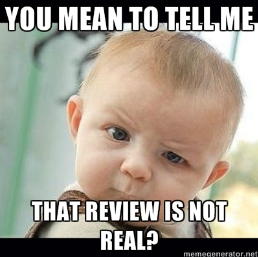— March 2, 2019
Many people think of accountability only when something goes wrong or someone is trying to place blame. Actually, accountability has far broader implications. People who have a high level of accountability will take initiative to ensure the success of a project, provide early warning of potential problems, and take action to resolve a problem even if it is not their fault.
Accountability is directly linked to an organization’s success. OnPoint Consulting’s research has found that 77 percent of leaders in top-performing organizations agree that “employees at all levels are held accountable for results.” Only 44 percent of leaders in less successful organizations said the same.
Although leaders are aware that it’s important, many of them still hesitate to hold others accountable for their actions. An OnPoint Survey of 935 leaders found that only 45 percent of them believed that managers dealt effectively with poor performers. It may seem faster and less of a hassle to let something go or simply wait and see what happens. In many cases, leaders don’t want to provoke conflict, causing them to overlook problems, force other employees to pick up the slack, or complete assigned tasks themselves.
Problems From a Lack of Accountability
When leaders fail to hold others accountable, however, they reap the consequences—some obvious, some not so obvious. Three major problems stand out from the rest:
- Low Productivity: When people aren’t held accountable, they don’t feel any external pressure to perform up to expectations. They are more likely to complete tasks late and produce substandard work. This can also contribute to low morale among team members.
- Punishment of Top Performers: Rather than addressing performance issues, it’s often easier to let high-performing employees pick up the slack for less accountable team members. While this may ensure that tasks are completed, it will build up resentment over time as high-performing employees feel (correctly) they’re being asked to do more than their fair share of work while others are allowed to skate by doing less.
- Negative Perception of Leadership: People notice how leaders treat each member of the team. If it becomes clear that certain members are not being held accountable for their performance, they will rightly believe that leadership isn’t taking responsibility for the team’s success. Over time, this can undermine trust because people won’t believe that team leaders will follow through on commitments or do what they say.
Accountability is About Expectations
In order to build accountability and enhance commitment, leaders need to encourage team members to take initiative and be responsible for their actions. They must make it clear how their actions affect the rest of the team and stress the importance of admitting mistakes rather than making excuses or assigning blame.
Leaders must also be clear about what they want people to do and “what good looks like.” If a leader is not clear about his or her expectations for performance it is much more difficult for them to hold someone accountable. Clarity about what people should do provides both leaders and employees with a solid platform to discuss accountability. The ATC model is particularly useful for clarifying expectations and laying out a plan for sustained success:
ATC = Action, Timetable, Checkpoints
- Action: A specific plan of action must be laid out and agreed upon by all parties. This could include agreeing who will be responsible for completing critical tasks, establishing a new standard for deliverables, or stipulating new communication standards.
- Timetable: Setting a timetable helps team members plan and organize their work. It also creates a sense of urgency, ensuring that a team member will not set the task aside in favor of some other task or simply ignore it altogether. A deadline is vital to helping the employee deliver on the task or commitment they’ve agreed to.
- Checkpoints: It’s difficult to hold someone accountable when they don’t know whether or not they’re meeting expectations. By establishing regular checkpoints, leaders can assess a team member’s progress. Leaders can offer feedback if someone is struggling to meet expectations or doesn’t know what they should be doing to reach their goal by the end of the timetable. Rather than waiting until the completion date to assess progress, at which point it’s too late to make adjustments, leaders can identify challenges and offer suggestions to help people complete the task in a high quality manner.
By establishing high expectations and using constructive feedback to break the cycle of poor performance, leaders can enhance accountability in their teams. When teams embrace accountability, they become more productive and can collaborate more effectively, which helps them contribute to business success. With virtual and cross-functional teams becoming more common across a range of industries, it’s vital that organizations put systems in place to promote better accountability to ensure those teams are able to achieve sustainable success.
Business & Finance Articles on Business 2 Community
(71)
Report Post







